Media | Articles
American Maybach: The doomed Gaylord Gladiator
Faster than a Cadillac, more luxurious than a Rolls-Royce, built by an airship company, and ordered by kings, the Gladiator should have been the finest vehicle ever made in 1950s America. It had previously unheard-of features, like an electrically-operated retractable hardtop, two years before the far more complex Ford Skyliner. And yet, only three were made, only two are known to exist, and this is probably the first you’ve ever heard of it.
You will, however, perhaps be familiar with the ubiquitous Bobby Pin. Used to secure hair—or as a makeshift lockpick in your favorite movies—it’s one of those objects people rarely think about. However, when Gaylord Products Inc. took over the Hump Hairpin Company (stop that snickering), a vast business empire was formed. The cash flowed in, funding a lifelong love of cars for two brothers who were heirs to the fortune. James and Edward Gaylord had grown up with Deusenbergs, Packards, and Pierce-Arrows. But they thought they could do better.
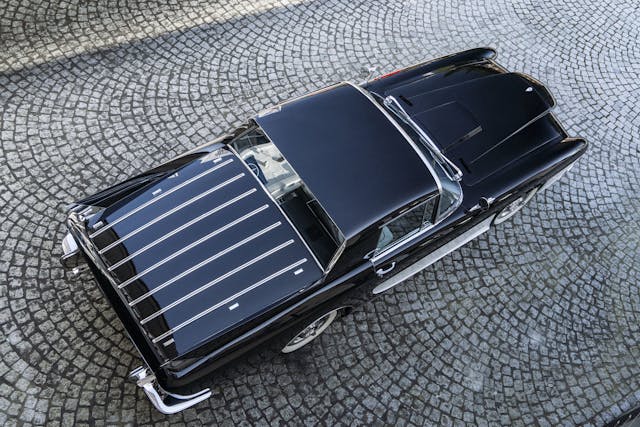
What the Gaylords wanted to do was combine the power and prestige of American-style motoring with European touches of lithe elegance. V-8 power with nimble handling. A luxurious ride that was supple, yet also nimble. Of course, many people have wanted to do much the same, but the Gaylords were up to their eyeballs in pin money.
The first designer they approached was Alexander Tremulis, the hand behind the 1948 Tucker. However, five years would pass before James and Edward were ready to act on their vision, and by this time Temulis was now working for Ford and unable to freelance. He could, however, make a recommendation.
Born in Milwaukee, Brooks Stevens designed a number of American icons. He drew the Miller Brewing logo, styled the 1949 Hydra-Glide Harley-Davidson, sketched out the Studebaker GT Hawk on a strict budget, and even managed to find time to create the third-generation Oscar-Mayer Wienermobile.
Marketplace
Buy and sell classics with confidence
Looking to please clients with very deep pockets, Stevens worked hard to incorporate some of the Gaylord’s wilder ideas. The prototype car featured enormous twin Lucas headlights, as big as air-raid searchlights, rear fins, squared-off wheel openings, and a ribbed rear panel that concealed a slide-out spare tire.
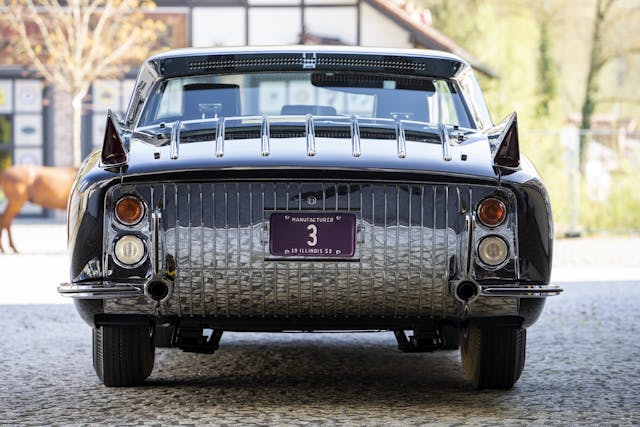
Chrome and a two-tone black-and-white paint scheme paired with whitewall tires gave the Gladiator a streamlined look that’d please Bruce Waynes of the world. It was the Batmobile in a tuxedo. The interior was even more opulent, with tropical wood in the dash, electric seats and windows, and even tiny swords fitted as needles on the instruments.
Further, underneath all this extravagance was some genuinely solid engineering. The chassis was a chome-moly tube frame, sealed against the elements, and isolated against vibration with huge rubber bushings. The rear springs even had leather covers for protection. At first a Chrysler-sourced 331-cubic-inch V-8 was used, but a Cadillac 365 was fitted to later cars and intended as the production option. The engine made 305 horsepower and, as the Gaylord was far lighter than a contemporary Cadillac, it could sprint to 60 mph in eight seconds.
The relative lightness helped the handling too, and there was even a variable adjustment for the amount of power steering assist. A planned supercharger would have upped the performance even further.
Three cars were built, and orders came rolling in from the likes of Farouk I, the former King of Egypt, and film noir legend Dick Powell. The cost of the Gladiator had ballooned from an intended $10,000 to $17,500, making it one of the most expensive cars of its day. It was significantly more expensive than a Rolls-Royce Silver Cloud, and would cost roughly $200,000 in today’s money.
Still, there might have been takers in the booming 1950s economy. The Gladiator was brash, cleverly made, and highly exclusive. Gaylord only needed to sell 25 examples per year to stay solvent.
The problem was building them. Improbably, the brothers had turned not to a conventional coachmaking outfit for production, but to Luftschiffbau Zeppelin. That’s right, the Gaylords bet it all on the people who built the Hindenburg.
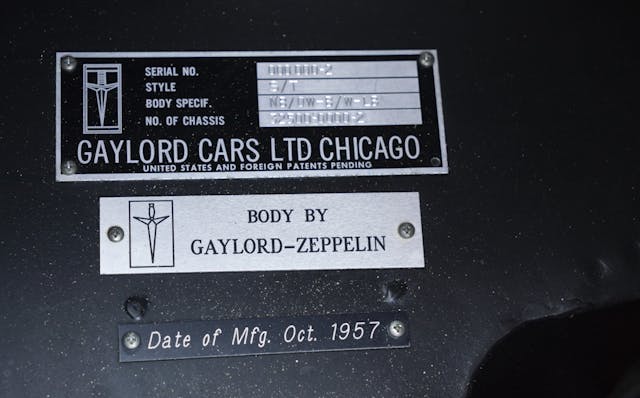
But perhaps this move was not so strange. After all, Wilhelm Maybach and his son originally founded Maybach as a subsidiary of the Zeppelin corporation. Mercedes-Maybach is still with us today, producing hugely expensive cars at a clear profit. The Gladiator could have had the same success.
However, having won the contract to produce the Gladiator, the Zeppelin company failed to deliver exactly what the Gaylord brothers had hoped for. It’s possible, given the wild styling of the vehicle, that some Gladiator design elements weren’t practical for the assembly line. It’s possible that the airship company lacked the necessary automotive expertise.

Whatever the case, the Gaylords sued. Once lawyers were involved, the stress of attempting to bring a car to market proved too great for James Gaylord. He suffered a nervous breakdown and was eventually convinced by his brother to throw in the towel.
Of the three Gladiators built, one was the Chrysler-powered prototype and the other two were quad-headlight models. Two are known to survive, one in private hands in the U.S. and the other in the Zeppelin museum in Friedrichschafen. The latter was restored in 2017.
Looking at photos of it, a level of daring audacity is on display. Like the Tucker, it is a story of what might have been. But car manufacturing is a bloodsport, and only a few survive. Some leave the arena as champions. Some gladiators fall and are forgotten.
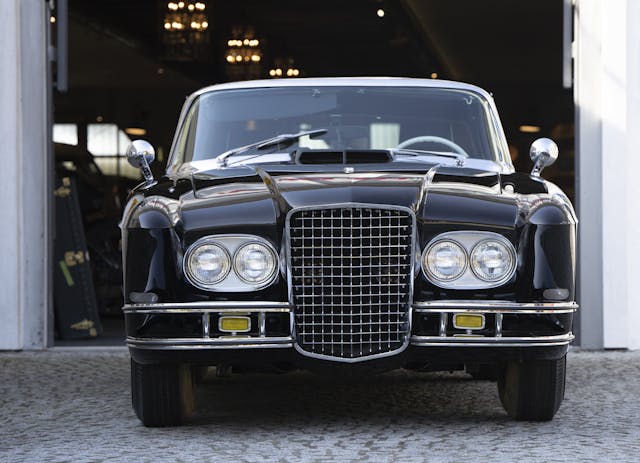
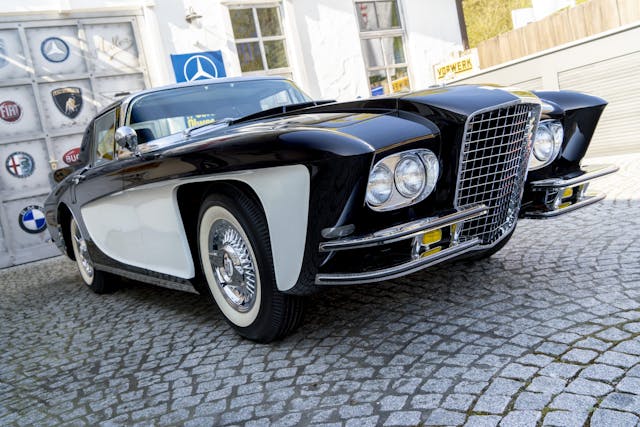
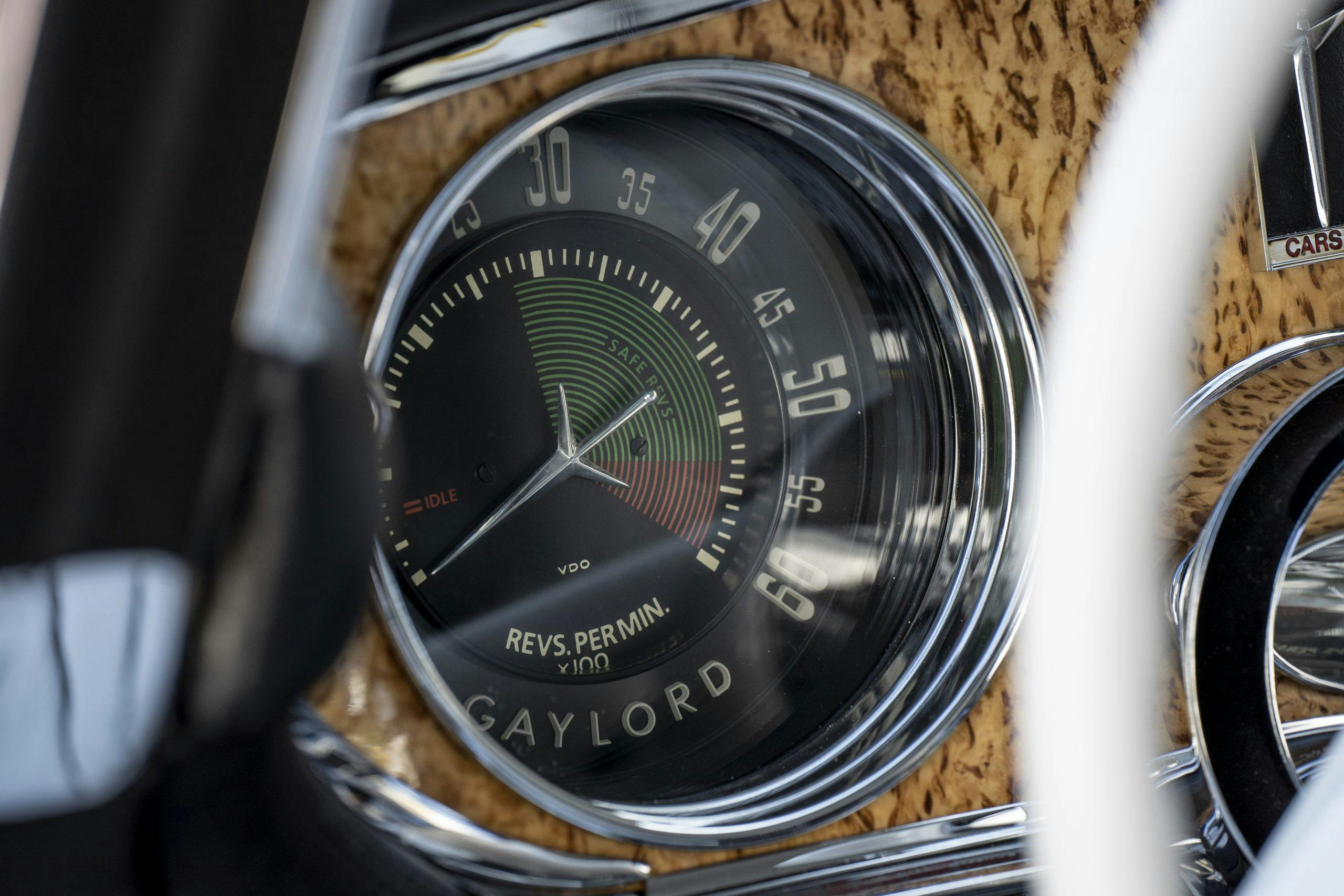
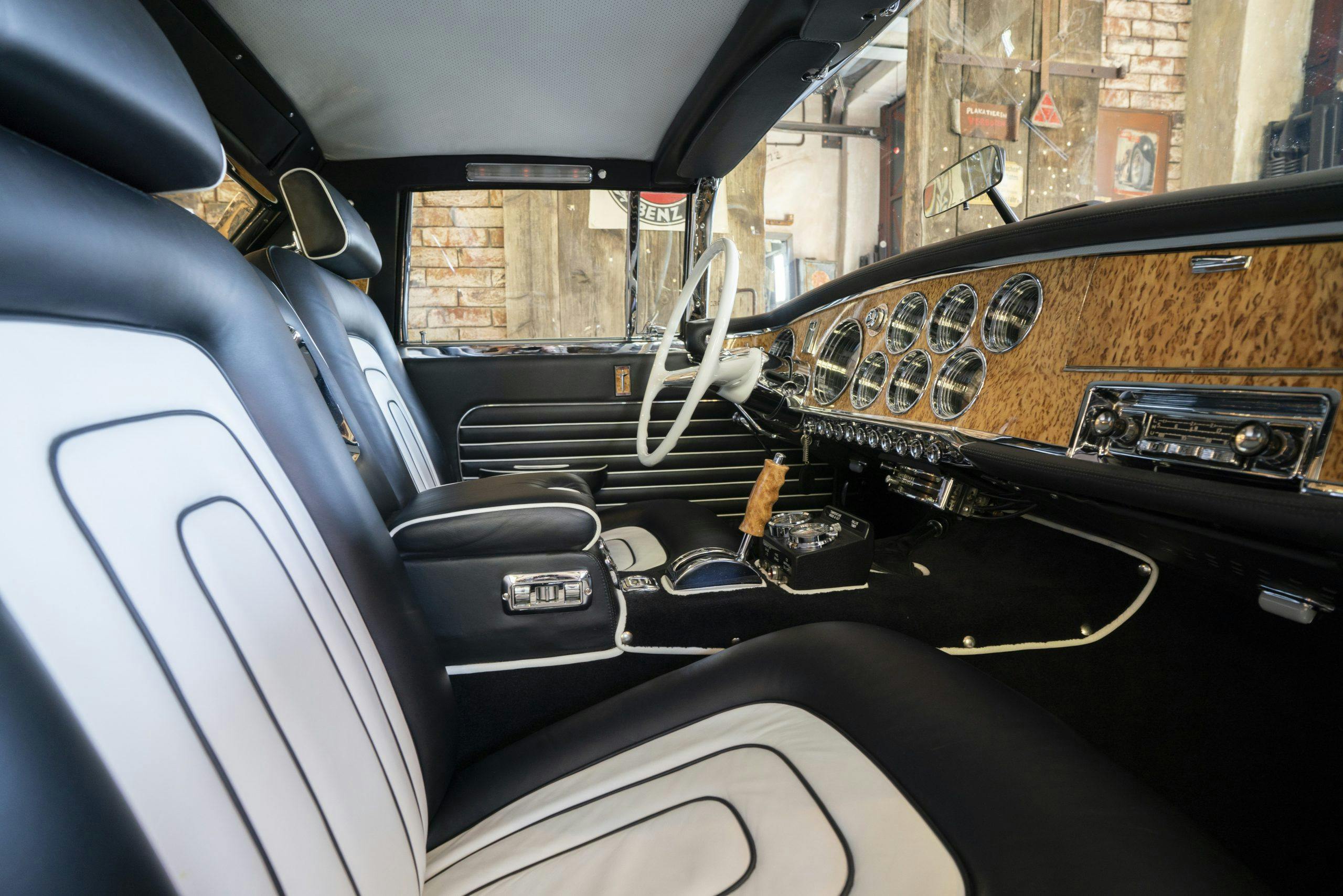

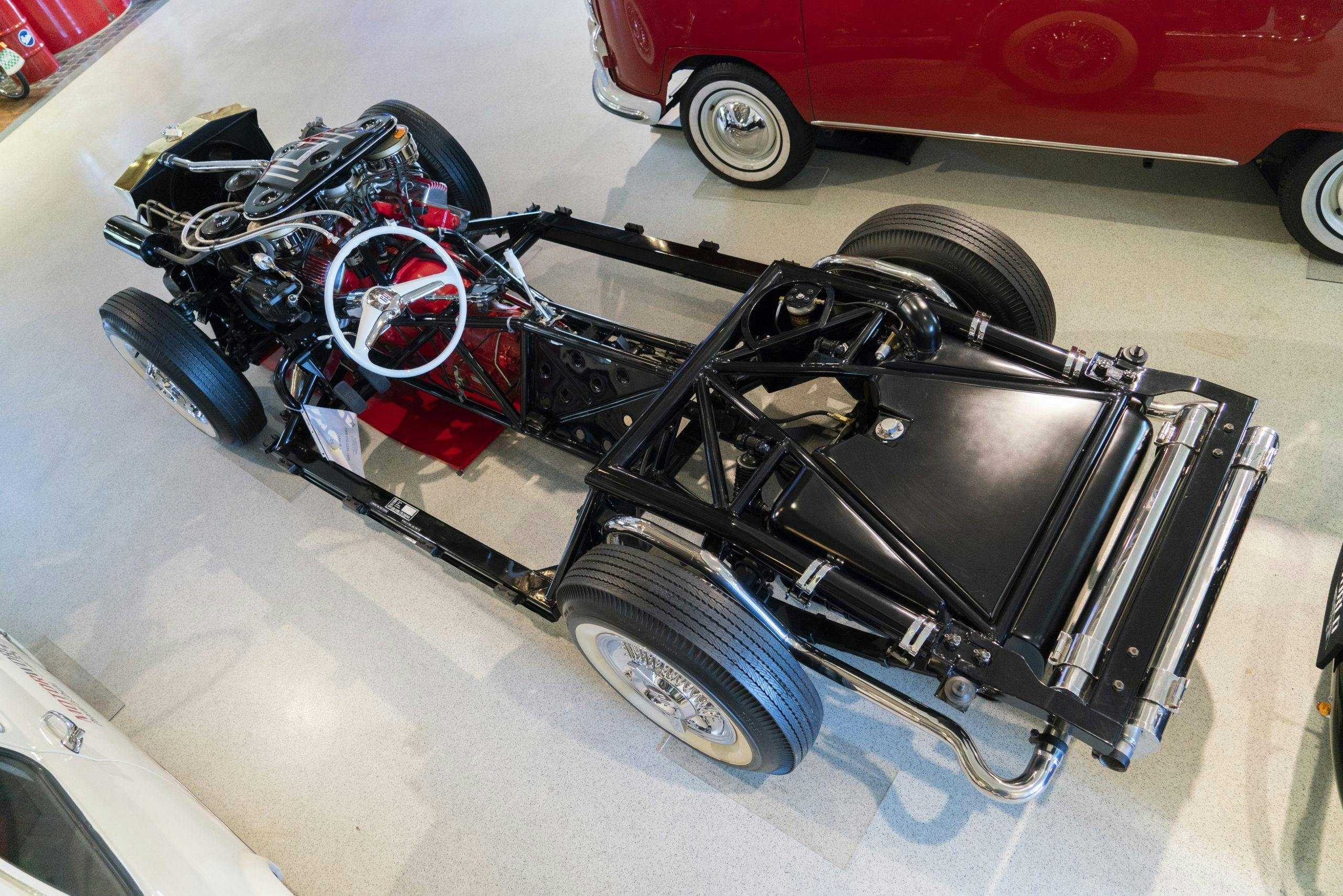











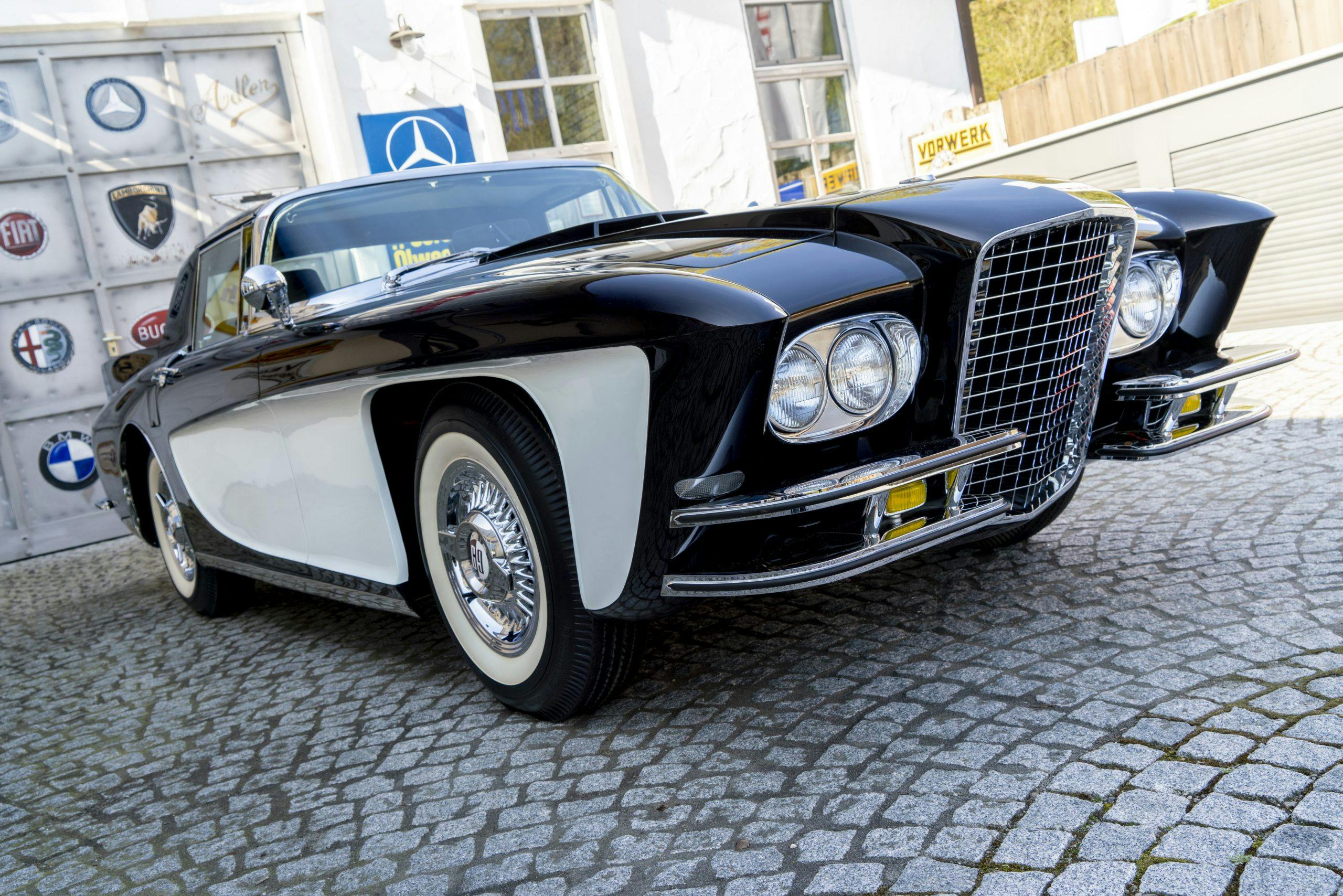
Greetings. Is there a 1957 or 1958 Gaylord Gladiator {by Mercedez} available for sale? Where? By whom? Thanks very much?
The 1956 P-100 Headlight Gaylord was VIN# 1 & the 1957 Dual-Headlight Gaylord was VIN# 2.
The car was definently seen by Industry insiders because you can see several of the Gaylord Gladiators advanced ‘styling-cues’ copied onto several other late ’50s & ’60s cars too.
The Hood Ornament Sword was used by Brook Stevens on his Excaliber Sports Car. The ‘side-cove’ went onto the Corvette and the front ‘Clamshell’ Fenders went on GM Concepts and Ferrari Testarossa’s.
I was involved with Jim Gaylord and Gladiator #2 in the late ’80s early ’90s and can attest to its build quality. Jim’s insistence on using only the highest quality parts led to cost over-runs, lawsuits and the eventual collapse of both the man’s health and his company’s.
The Gaylord Gladiator was an impressive well-designed luxury sports car backed-up by a poorly managed self-financed attempt to enter the very limited mid-50s luxury sportscar marketplace.
The Zepplin Museum is a fitting home for the Gaylord.
The 1956 P-100 Headlight Gaylord was VIN# 1 & the 1957 Dual-Headlight Gaylord was VIN# 2.
The car was definitely seen by Industry insiders because you can see several of the Gaylord Gladiators advanced ‘styling-cues’ copied onto several other late ’50s & ’60s cars too.
The Hood Ornament Sword was used by Brook Stevens on his Excaliber Sports Car. The ‘side-cove’ went onto the Corvette and the front ‘Clamshell’ Fenders went on GM Concepts and Ferrari Testarossa’s.
I was involved with Jim Gaylord and Gladiator #2 in the late ’80s early ’90s and can attest to its build quality. Jim’s insistence on using only the highest quality parts led to cost over-runs, lawsuits and the eventual collapse of both the man’s health and his company’s.
The Gaylord Gladiator was an impressive well-designed luxury sports car backed-up by a poorly managed self-financed attempt to enter the very limited mid-50s luxury sportscar marketplace.
The Zepplin Museum is a fitting home for the Gaylord.